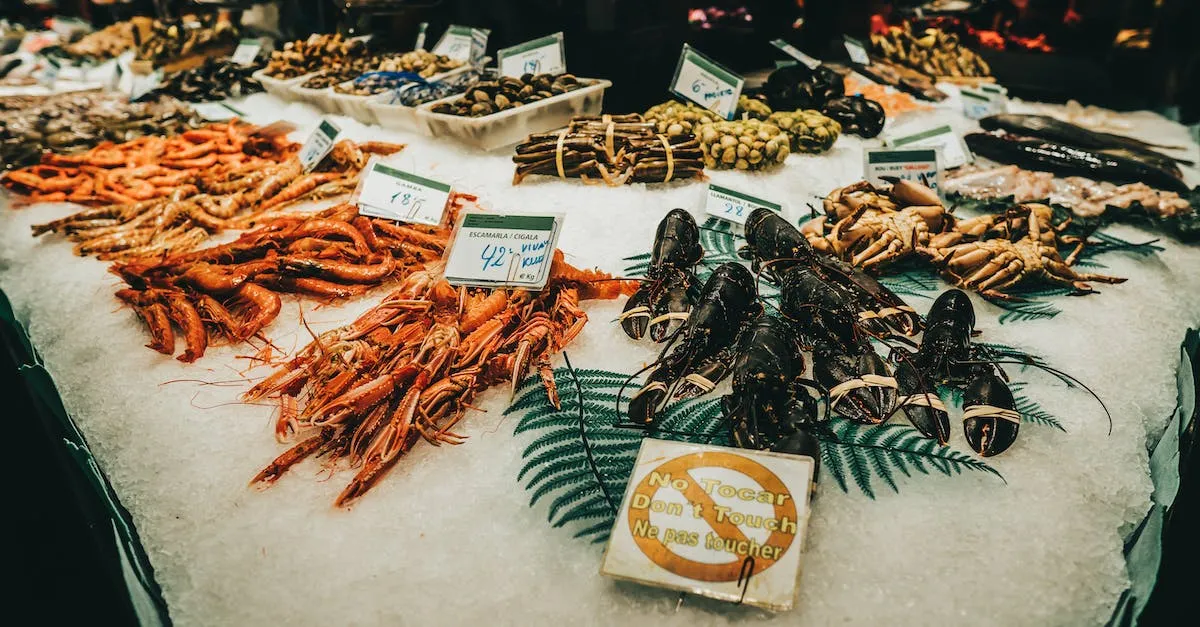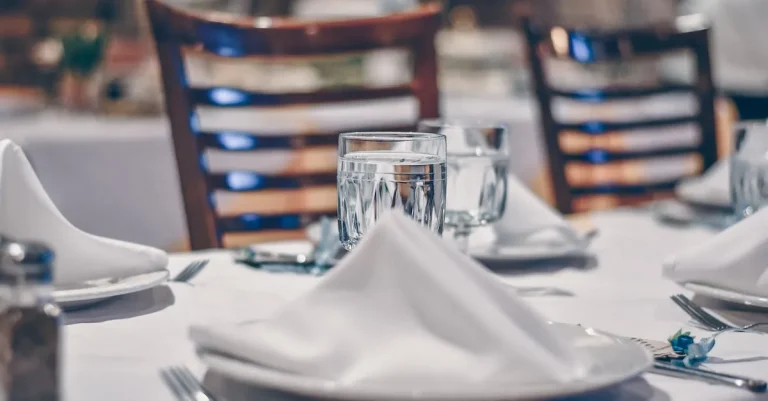Maine Lobster Vs. Florida Lobster: How Do They Compare?
Lobster lovers often debate the merits of Maine lobster from the Atlantic waters versus Florida lobster from the Gulf. While both offer high-quality shellfish, there are some key differences between Maine and Florida lobster in terms of biology, harvesting, processing, taste, and more.
If you’re short on time, here’s a quick answer: Maine lobster is generally considered superior in taste and texture due to colder Atlantic waters, strict regulations, and local processing. Florida lobster tails can be less expensive but lack the full flavor and meat concentration of whole Maine lobsters.
Lobster Species
Maine lobster – Homarus americanus
The Maine lobster, scientifically known as Homarus americanus, is a species of lobster found in the cold waters of the North Atlantic Ocean. It is primarily harvested in the coastal regions of Maine, hence its name.
Maine lobsters are known for their large size, sweet and succulent meat, and distinctive red color. They have two large claws, one crusher claw used for crushing shells and one pincher claw used for tearing food apart.
They are highly prized for their flavor and are considered a delicacy in many parts of the world.
Florida lobster – Panulirus argus
The Florida lobster, scientifically known as Panulirus argus, is a species of spiny lobster found in the warm waters of the Caribbean Sea and the Gulf of Mexico, including the coast of Florida. Unlike the Maine lobster, Florida lobsters do not have large claws.
Instead, they have a pair of long antennae and a set of spiny projections on their carapace. Florida lobsters are known for their firm and flavorful meat, which is often compared to that of the Maine lobster.
They are also popular in various seafood dishes and are a favorite among divers and snorkelers who enjoy catching them.
Biological differences between clawed and spiny lobsters
The main biological difference between clawed lobsters (such as the Maine lobster) and spiny lobsters (such as the Florida lobster) lies in their physical characteristics. Clawed lobsters have large, powerful claws that they use for defense and catching prey.
Spiny lobsters, on the other hand, have a pair of long antennae and a carapace covered in spiny projections that provide protection.
While both species of lobsters have their own unique qualities and flavors, it ultimately comes down to personal preference. Some people prefer the sweet and tender meat of the Maine lobster, while others enjoy the firm and flavorful meat of the Florida lobster.
It’s worth noting that the availability and price of each species may vary depending on the region and season.
If you want to learn more about lobsters and their differences, you can visit https://www.maine.gov/dmr/science-research/species/lobster/index.html for more information about Maine lobsters and https://myfwc.com/research/saltwater/crustaceans/spiny-lobster/ for more information about Florida lobsters.
Harvesting
Maine lobster fishing season, regulations and techniques
Maine is well-known for its delicious and succulent lobsters, and the state takes great pride in ensuring the sustainability of its lobster industry. The lobster fishing season in Maine typically begins in late June and extends until late November.
During this time, lobstermen head out to sea in their boats to harvest these prized crustaceans.
There are strict regulations in place to protect the lobster population and ensure its long-term viability. Lobster traps, also known as “lobster pots,” are commonly used in Maine for catching lobsters. These traps are made of wire mesh and baited with fish or other seafood to attract the lobsters.
Once the lobsters enter the trap, they can easily get in but have a difficult time getting out. Lobstermen check their traps regularly to harvest the lobsters and release any undersized or egg-bearing ones back into the water to maintain a healthy population.
If you’re interested in learning more about Maine lobster fishing techniques, you can visit Maine Department of Marine Resources website for detailed information and guidelines.
Florida lobster trapping season and regulations
On the other hand, Florida is famous for its spiny lobsters, which have a slightly different harvesting method compared to their Maine counterparts. The Florida lobster trapping season typically runs from August to March, with a peak in the months of September and October.
During this time, lobstermen in Florida set out their traps to catch these delectable crustaceans.
Unlike Maine lobsters, which are caught using traps, Florida lobsters are captured by hand or with the help of a “lobster tickler” or “snare,” a long pole with a loop at the end. Lobster divers swim down to the ocean floor and search for lobsters hiding in crevices and coral reefs.
Once they spot a lobster, they gently coax it out of its hiding spot and use the snare to catch it.
It’s important to note that Florida has specific regulations in place to protect the spiny lobster population. These regulations include size limits, bag limits, and a ban on harvesting egg-bearing females.
The Florida Fish and Wildlife Conservation Commission is responsible for enforcing these rules and ensuring the sustainability of the spiny lobster fishery.
If you’re interested in learning more about Florida lobster trapping season and regulations, you can visit the Florida Fish and Wildlife Conservation Commission website for more information.
Sustainability of supplies
Both Maine and Florida take the sustainability of their lobster supplies seriously. Lobster populations can be affected by various factors such as overfishing, habitat degradation, and climate change. To combat these threats, both states have implemented strict regulations and measures to ensure the long-term viability of their lobster fisheries.
In Maine, the lobster fishery is managed through a combination of state and federal regulations. These regulations include size limits, trap limits, and seasonal closures in certain areas to protect breeding populations.
The lobster industry in Maine also participates in lobster stock assessments and collaborates with scientists to monitor the health of the lobster population and make informed management decisions.
Similarly, Florida has implemented measures to protect its spiny lobster population. These include size limits, bag limits, and a prohibition on harvesting egg-bearing females. The Florida Fish and Wildlife Conservation Commission works closely with lobster fishermen and scientists to monitor the health of the spiny lobster population and adjust regulations as needed.
By implementing sustainable fishing practices and regulations, both Maine and Florida are working towards preserving their lobster populations for future generations to enjoy.
Processing
Live lobsters vs. frozen tails
When it comes to processing, one of the key differences between Maine lobster and Florida lobster is the way they are sold. Maine lobster is predominantly available as live lobsters, while Florida lobster is typically sold as frozen tails.
In Maine, the strict processing standards ensure that the lobsters are delivered to customers in the freshest possible condition. Live lobsters are harvested from the cold, pristine waters of the Atlantic Ocean and are carefully packed to maintain their freshness during transportation.
This means that when you buy Maine lobster, you can be assured of enjoying the sweet, succulent meat that is characteristic of this delicacy.
On the other hand, Florida lobster tails are frozen shortly after being caught. While this allows for easier storage and transportation, it can impact the texture and flavor of the meat. Some argue that frozen tails are not as tender or flavorful as live lobsters.
However, frozen tails are still a popular choice for those who prefer the convenience of having lobster meat readily available.
Maine’s strict processing standards
Maine takes great pride in its strict processing standards, which ensure that the lobsters are handled with utmost care and attention. The state has regulations in place to ensure that all lobsters are processed in a humane manner.
This includes measures such as avoiding overcrowding during transportation and using methods that minimize stress on the lobsters.
Additionally, Maine has regulations that require lobsters to be harvested at a certain size to ensure sustainability. This helps to maintain the population of lobsters in the region and ensures that future generations can continue to enjoy this delicacy.
These stringent processing standards have earned Maine lobster a reputation for being of exceptional quality. Many seafood enthusiasts consider Maine lobster to be the gold standard when it comes to lobster.
Widespread shipping of Florida tails
While Maine lobster is primarily shipped as live lobsters, Florida lobster tails have gained popularity due to their widespread availability. Frozen tails can be easily shipped across the country, making them accessible to consumers who may not have easy access to live lobsters.
Florida lobster tails are known for their large size and meaty texture. They are often used in various lobster dishes and are especially popular in areas where live lobsters are not readily available.
It’s worth noting that while frozen tails may not have the same level of freshness as live lobsters, they can still be enjoyed in a variety of delicious preparations. From grilled to steamed, there are numerous ways to savor the unique flavor of Florida lobster tails.
Price Differences
Wholesale and retail price per pound
When it comes to comparing the price of Maine lobster and Florida lobster, one of the key factors to consider is the wholesale and retail price per pound. Generally, Maine lobster tends to be more expensive than Florida lobster due to factors such as supply and demand, location, and market preferences.
According to recent statistics from the Maine Lobster Marketing Collaborative, the average wholesale price for Maine lobster in 2020 was around $6.50 per pound. On the other hand, Florida lobster, also known as spiny lobster, was priced at around $4.50 per pound.
It’s important to note that these prices can vary based on various factors, including seasonality and market conditions.
Whole lobster vs. tails
Another aspect to consider when comparing the price of Maine lobster and Florida lobster is the difference between whole lobster and lobster tails. Maine lobster is often sold as whole lobsters, which means the price per pound includes the weight of the entire lobster, including the claws and body.
On the other hand, Florida lobster is typically sold as tails, which means the price per pound only includes the weight of the tail meat. This can lead to differences in price per pound, as the weight of the shell and other parts of the lobster are not factored into the cost of Florida lobster tails.
Therefore, it’s essential to consider the specific product you are purchasing when comparing prices.
Factors impacting cost
Several factors can impact the cost of both Maine and Florida lobster. One significant factor is the seasonality of the lobster catch. Maine lobster is primarily harvested from May to November, while Florida lobster is typically caught from August to March.
The limited availability of Maine lobster during the off-season can drive up prices. Additionally, transportation costs can influence the price, as Maine lobster often needs to be shipped long distances to reach certain markets.
The size and quality of the lobster can also impact the cost, with larger and higher-quality lobsters often commanding higher prices. Finally, market demand and competition play a role in determining the cost of lobster, with high demand during peak seasons potentially leading to higher prices.
It’s important to keep in mind that while price is a significant factor to consider when choosing between Maine lobster and Florida lobster, there are other factors to consider as well, such as taste, texture, and cooking methods.
Ultimately, the choice between the two types of lobster depends on personal preference and the specific dish you have in mind.
Taste and Texture
When it comes to taste and texture, Maine lobster and Florida lobster have some notable differences due to factors such as their habitat and diet.
Influence of cold Atlantic waters
Maine lobsters thrive in the cold Atlantic waters of the Northeast, which gives them a unique taste and texture. The cold temperatures of the water cause the lobsters to grow at a slower rate, resulting in a firmer and meatier texture.
The colder waters also contribute to the lobsters’ sweet and rich flavor, making them highly sought after by seafood connoisseurs.
Meat concentration in claws and body
One key difference between Maine lobster and Florida lobster is the concentration of meat in different parts of the crustacean. Maine lobsters are known for their large claws, which contain a significant amount of succulent and tender meat.
The body meat of Maine lobsters is also plentiful and has a firm texture. On the other hand, Florida lobsters have less meat in their claws, with the majority of the meat concentrated in their tails. This results in a slightly different texture and taste compared to their Maine counterparts.
Milder flavor of Florida tails
The tails of Florida lobsters have a milder flavor compared to the meat of Maine lobsters. This is due to the Florida lobsters’ diet, which mainly consists of shellfish and other marine organisms found in the warm waters of the Caribbean.
The warmer temperatures and different food sources contribute to a subtly different taste profile, with some describing Florida lobster tails as having a sweeter and more delicate flavor.
It’s worth noting that taste preferences can vary from person to person, and both Maine and Florida lobsters have their own unique qualities that make them enjoyable seafood options. Ultimately, the choice between the two may come down to personal preference and the specific dish being prepared.
Conclusion
While both provide a delicious crustacean dish, Maine and Florida lobster have noticeable differences when it comes to species, harvesting, processing, pricing, and taste. The iconic Maine lobster generally commands premium prices for its superior flavor and texture as a whole lobster meal.








